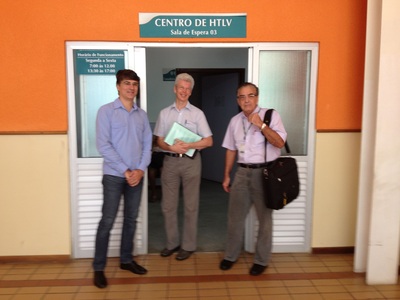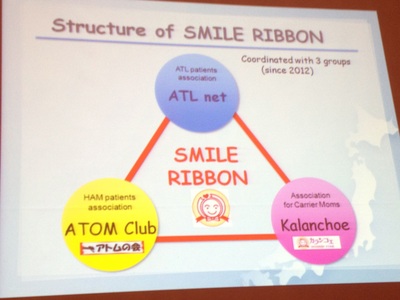What is HTLV-2?
What is HTLV-2?
HTLV stands for Human T cell Leukemia Virus. It is a retrovirus that infects a type of white blood cell called a T-cell or T-lymphocyte.
HTLV-2 infection is mostly seen in Native American's and people from Western Africa.
The exact number of people infected in the UK is not known but is much less than the number infected with HTLV-1. For example, only 1 in 100,000 blood donors in the UK were found to carry HTLV-2 compared with 1 donor in 20,000 for HTLV-1.
HTLV stands for Human T cell Leukemia Virus. It is a retrovirus that infects a type of white blood cell called a T-cell or T-lymphocyte.
HTLV-2 infection is mostly seen in Native American's and people from Western Africa.
The exact number of people infected in the UK is not known but is much less than the number infected with HTLV-1. For example, only 1 in 100,000 blood donors in the UK were found to carry HTLV-2 compared with 1 donor in 20,000 for HTLV-1.
How is HTLV-2 passed on?
HTLV-2 can be passed on through infected blood, semen, vaginal fluids, rectal secretions, breast milk and organ transplants. The most common ways HTLV-2 is passed on are:
Interestingly, similar to Hepatitis C, although transmitted just like HTLV-1, HTLV-2 is most commonly detected in people who use intravenous (i.v.) drugs or have used i.v. drugs in the past. Lack of access to clean needles, contributes to the spread of all blood borne viruses including HTLV-2. In Europe the highest rates of HTLV-2 are found amongst people who use i.v. drugs, for example in Eire, Spain, Portugal, Italy and Sweden.
Does HTLV-2 cause any disease?
HTLV-2 is even less commonly associated with disease than HTLV-1. Very little data is available on the natural history of HTLV-2. Sadly, the HOST study led by Professor Edward L Murphy, the largest natural history study of HTLV in North America, lost funding in 2011. The HOST study showed that people infected with HTLV-2 have a small increased risk of bacterial infections, particularly of the chest and bladder.
HTLV-2 can be passed on through infected blood, semen, vaginal fluids, rectal secretions, breast milk and organ transplants. The most common ways HTLV-2 is passed on are:
- Sex without a condom
- Sharing used needles, syringes or other injecting drug equipment
- Mother to child (the risk of transmission can be significantly reduced via this route if breast feeding is avoided)
- Blood Transfusion/Organ Transplants (blood and organs should not be donated if infected with HTLV. Blood and organs are screened in the UK)
Interestingly, similar to Hepatitis C, although transmitted just like HTLV-1, HTLV-2 is most commonly detected in people who use intravenous (i.v.) drugs or have used i.v. drugs in the past. Lack of access to clean needles, contributes to the spread of all blood borne viruses including HTLV-2. In Europe the highest rates of HTLV-2 are found amongst people who use i.v. drugs, for example in Eire, Spain, Portugal, Italy and Sweden.
Does HTLV-2 cause any disease?
HTLV-2 is even less commonly associated with disease than HTLV-1. Very little data is available on the natural history of HTLV-2. Sadly, the HOST study led by Professor Edward L Murphy, the largest natural history study of HTLV in North America, lost funding in 2011. The HOST study showed that people infected with HTLV-2 have a small increased risk of bacterial infections, particularly of the chest and bladder.





